Cast iron is a notoriously difficult material to weld due to its high carbon content and brittle nature. However, with the right technique and equipment, it is possible to successfully MIG weld cast iron.
Whether you are repairing an antique cast iron stove or a modern engine block, learning how to weld cast iron can save you time and money.
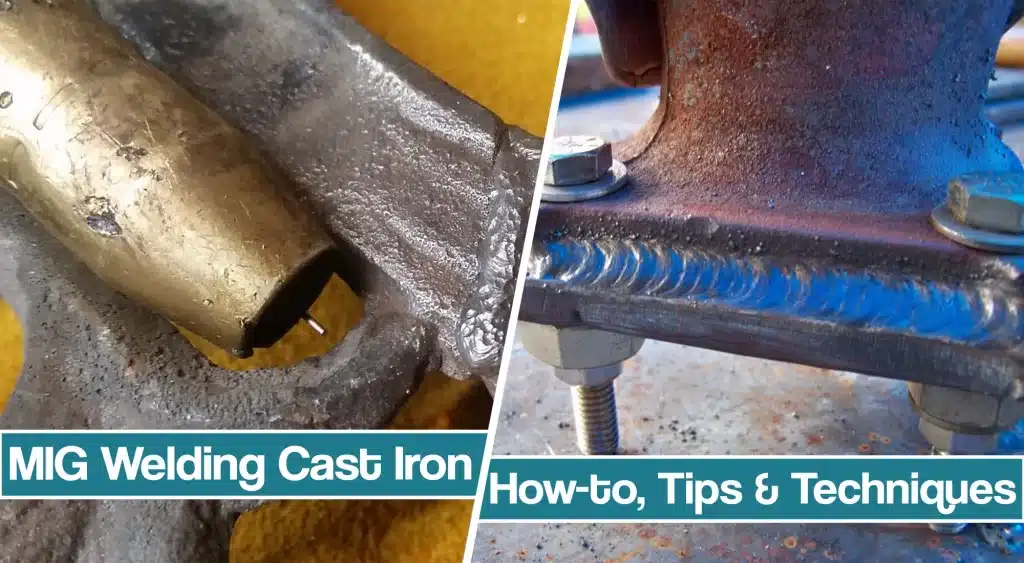
In this article, we will explain how to MIG weld cast iron, exploring the steps, equipment, and tips needed to achieve a strong and durable weld.
What is cast iron, and why is it used?
Cast iron is a group of iron-carbon alloys with a carbon content greater than 2%. This high carbon content gives cast iron its characteristic hardness and brittleness. The material is widely used in a variety of applications, including construction, automotive, and household items such as cookware and pipes.
Cast iron is divided into four main types: gray iron, white iron, ductile iron, and malleable iron.
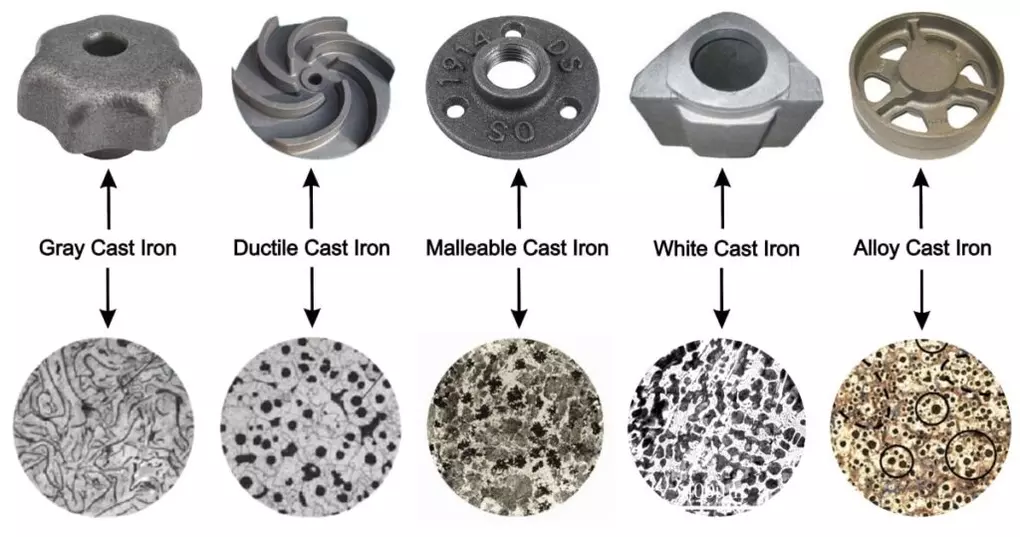
- Gray cast iron is the most commonly used type and is known for its low melting point and excellent casting properties.
- White iron is much harder and more brittle than grey iron and is often used in applications where wear resistance is important.
- Ductile cast iron is strong and flexible. Ductile weld metal is a cast iron alloy that is ideal for pipes and other infrastructure applications.
- Malleable cast iron is easily shaped and bent, making it popular for use in decorative items and hardware.
What Is The Weldability of Cast Iron And Success Chances?
Despite its many uses, cast iron welding is notoriously difficult. This is due to its high carbon content, which causes the material to become brittle and prone to cracking during the welding process. Additionally, cast iron often contains impurities and inclusions, which can make it difficult to achieve a strong and consistent weld.
To successfully weld cast iron, it is important to use the proper technique and equipment. One commonly used method is MIG welding, which uses a wire feed and shielding gas to create a strong and durable weld.
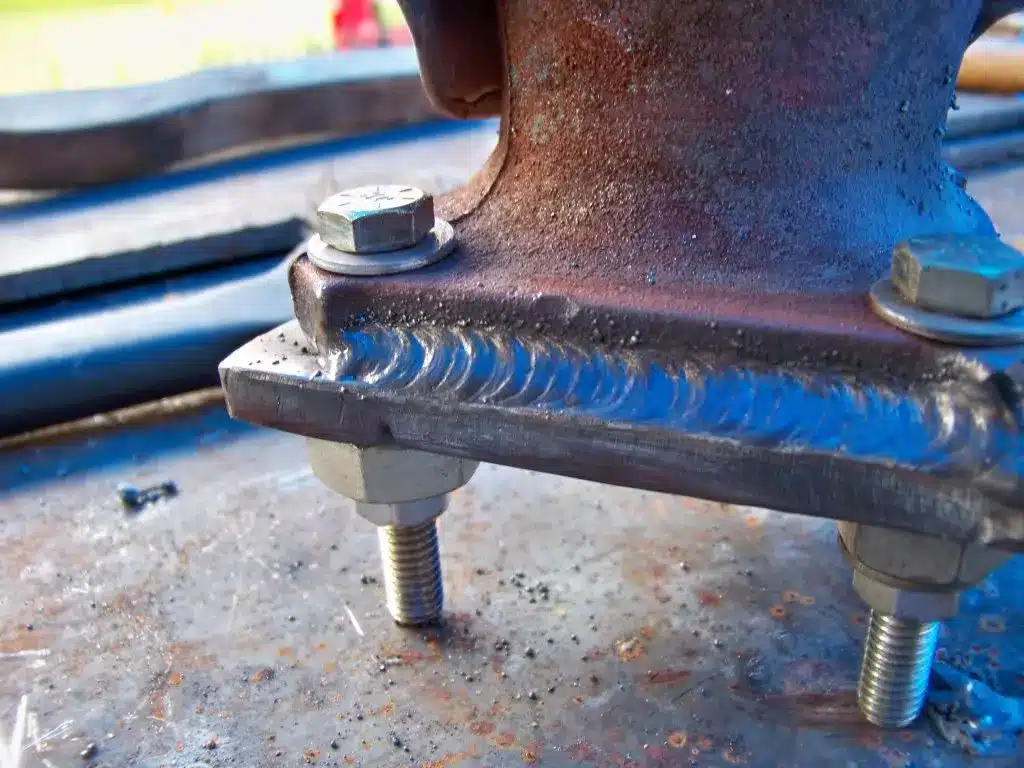
However, MIG welding cast iron requires careful preheating, slow cooling, and the use of a special welding wire that is designed for use with cast iron. Another option for welding cast iron is to use Manual Metal Arc welding with a stick welding rod, or a specialized welding process known as TIG welding, which uses a non-consumable tungsten electrode and a filler rod to create a strong and precise weld. However, TIG welding can be time-consuming and may not be suitable for all applications.
In addition to traditional welding, cast iron can also be repaired using gas welding or oxy-acetylene welding, brazing, braze welding, TIG brazing, or soldering techniques. These methods involve heating the material and applying a filler material that binds to the cast iron, creating a strong and durable bond. However, even if you do everything right, the success chances are 50%.
How To MIG Weld Cast Iron?
MIG welding cast iron is a challenging task that requires the right welding tools and techniques. Before attempting to weld cast irons, it is important to understand the properties of the material and its potential pitfalls. Cast iron is brittle and prone to cracking, so welders should take care to keep their welds as clean and uniform as possible in order to reduce the risk of cracking.
Cast iron should be cleaned and free of any surface contaminants before welding. Use a wire brush or grinder to remove any rust, paint, or other debris from the surface of the material. Preheating the material to between 500 and 1200 degrees Fahrenheit before welding will prevent pre and post-weld cracking and improve the flow of the weld.
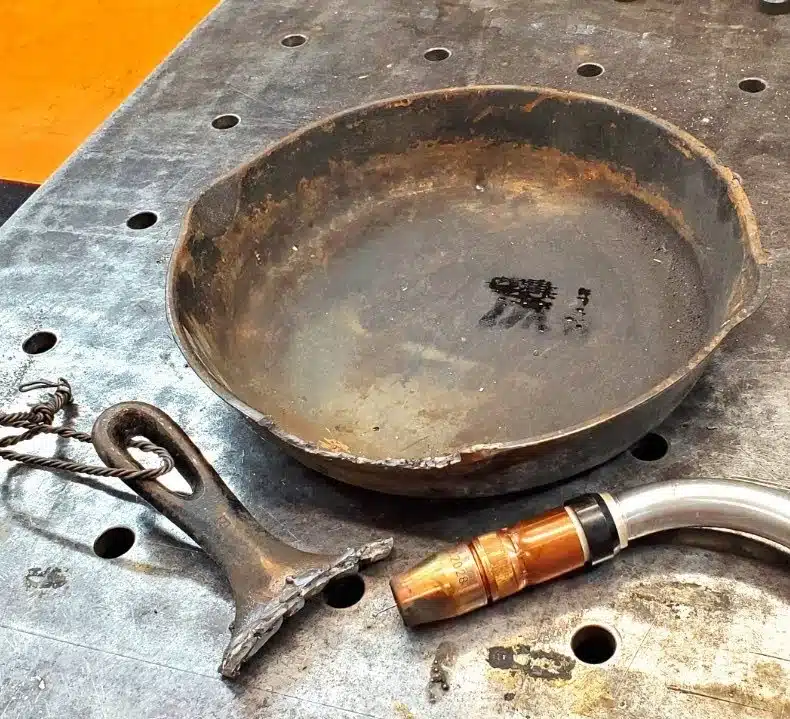
The most important aspect of MIG welding cast iron is to use a low amperage setting. This will help minimize heat buildup, which can lead to cracking. The amperage should be set between 70 and 90 amps for most applications. It is also important to use a small diameter wire; this will provide better control over the size of the weld bead and reduce the risk of porosity.
It is important to maintain an even speed when welding; moving too quickly can cause poor fusion between layers or lack of penetration into the base material while moving too slowly can cause excessive heat buildup and warping. After welding, allow the material to cool slowly to room temperature to avoid any sudden changes in temperature that could cause the material to crack.
How To Prepare Cast Iron For Welding?
To properly prepare the cast iron joint for welding, there are several important steps that must be taken. First, the surface of the cast iron must be cleaned to ensure that all dirt, grease, oil, and other pollutants are removed from the area to be welded.
This can be done using a wire brush or sandpaper for larger areas and a pick or scraper for smaller areas. Additionally, any rust present must be removed by grinding or sanding the surface.
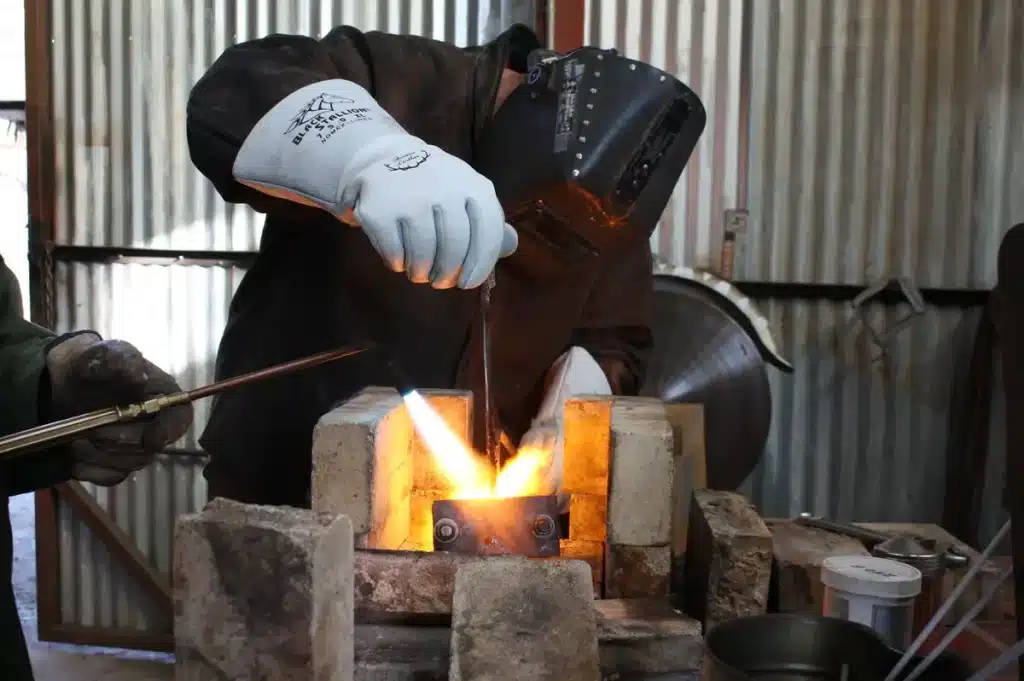
Once the surface is clean and free from rust, it is important to preheat the cast iron before welding can commence. Typically, cast iron is preheated to between 500 and 1200 degrees Fahrenheit. Preheating the cast iron prior to welding can help prevent cracking and improve the flow of the weld. The temperature at which the material should be preheated will depend on the thickness of the material and the type of cast iron being used.
MIG Welding Wire For Cast Iron
When it comes to MIG welding cast iron, selecting the right welding wire is crucial.
- The nickel-based wire is the most common type of welding wire used for welding cast iron. It is often referred to as “nickel-alloy” wire and is made from a combination of nickel, iron, and other trace elements. Nickel wires are highly resistant to cracking and are able to withstand the high temperatures and stresses associated with welding cast iron.
- High-nickel electrodes are another type of welding wire that is used for welding cast iron. This wire contains a high percentage of nickel, typically between 55% and 65%. The high-nickel wire is known for its ability to produce strong, ductile welds that are resistant to cracking.
- Ferro nickel rods are a type of welding wire that is used for welding cast iron. It contains a high percentage of nickel, typically between 45% and 60%, and is known for its ability to produce strong, ductile welds that are resistant to cracking.
What Is The Best Shielding Gas For MIG Welding Cast Iron?
Pure argon is a common shielding gas used with a MIG welder to join cast iron. It is often used when welding thin sections of cast iron or when welding cast iron to other materials such as mild steel or stainless steel. Argon is an inert gas that provides good arc stability and can help to produce a smooth, even weld.
Argon-CO2 mixtures are another type of shielding gas that can be used for MIG welding cast iron. These mixtures typically contain between 2% and 5% CO2, with the remainder being argon. The addition of CO2 helps to increase the heat input and improve the penetration of the weld, making it ideal for welding thicker sections of cast iron.
Argon-Helium mixtures can be used for MIG welding cast iron, particularly when welding thick sections of material. These mixtures typically contain between 25% and 50% helium, with the remainder being argon. The addition of helium helps to increase the heat input and improve the penetration of the weld.
MIG Welding Technique For Cast Iron
MIG welding is one of the most common and popular welding techniques used to weld cast iron. The process works by using a continuous wire feed that is connected to an electrical power source. For MIG welding cast iron, it’s important to use a high-powered direct current (DC) machine.
The voltage should be set between 30 and 60 volts for the best results, and the wire feed speed should be set between 140 and 250 inches per minute.
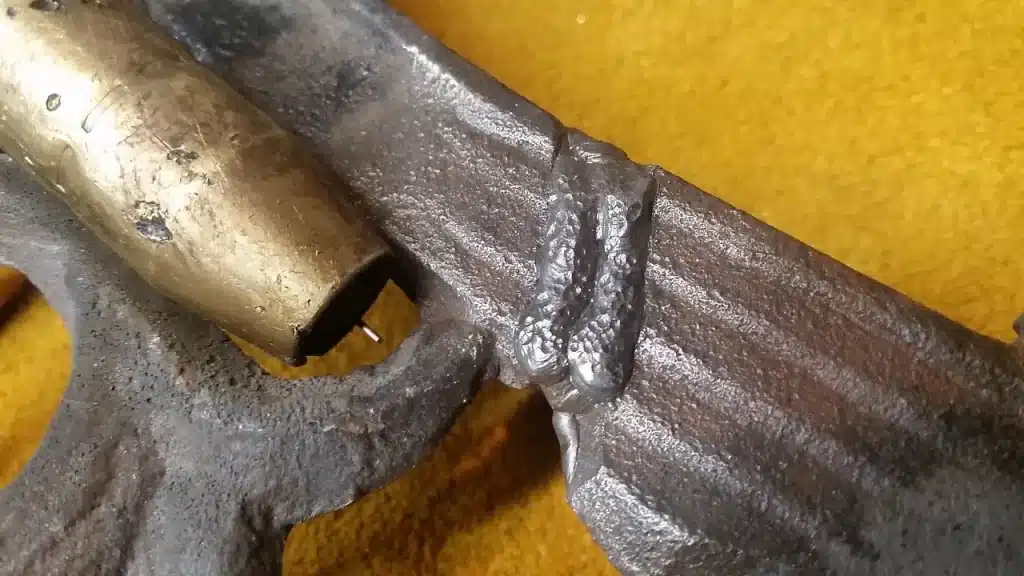
The next step is to set up the MIG gun properly for welding. This includes adjusting the contact tip so that it’s slightly recessed into the material being welded, setting up a drag angle of approximately 10 degrees, and making sure that there’s no back spatter present in the weld area. To begin welding, hold down a steady arc length with a consistent speed while slowly moving along in a straight line in order to ensure even bonding between the two pieces of metal being joined together.
As you move along with your weld pass, keep an eye out for any signs of porosity or undercut in order to make sure that your weld is free from any defects before you move on to another section. You can use a stitch or a skip welding technique. This involves welding a short distance and then moving the torch away from the weld. This technique helps to reduce the heat input and prevent the material from overheating and cracking. It is also important to pause between welds to allow the material to cool down.
Post Weld Treatment
Once you’ve completed your weld pass, it’s time to inspect your work! Look for any signs of cracking or warping in order to make sure that your weld is strong enough for its intended purpose before you move on to another project.
After welding, it is essential to allow the material to cool down slowly to prevent cracking. The material can be covered with a heat-resistant blanket to slow down the cooling process. Once the material has cooled down, it can be cleaned. Covering the weld with a heat-resistant material, such as sand or ceramic, can help to slow down the cooling process.
Tips For MIG Welding Cast Iron
- Clean the surface of the cast iron or remove casting skin thoroughly before welding.
- Preheat the entire casting to reduce the risk of cracking.
- Use a low amperage setting to prevent overheating the material.
- Use a stitch or skip welding technique to reduce heat input and prevent cracking.
- Allow the material to cool down slowly after welding to prevent cracking.
- Use a ductile iron MIG wire designed for welding cast iron.
- Choose a shielding gas with high argon content to provide good coverage.
- Keep the weld area covered with a heat-resistant blanket to slow down the cooling process.
- Use a slow wire feed speed to prevent overheating the material.
- Inspect the welds carefully to ensure there are no cracks or defects.
Conclusion
MIG welding cast iron, such as grey cast iron, is a challenging process that requires proper techniques and equipment to produce strong and crack-resistant welds. Cast iron is a brittle metal that can crack easily, especially during the welding process.
Therefore, it is crucial to clean the surface, preheat the material, select the appropriate wire and shielding gas, adjust the welding parameters, and use a tack weld, a stitch, or skip welding technique. By following these steps and tips, welders can produce high-quality welds on cast iron.
Resources
- https://www.twi-global.com/technical-knowledge/faqs/can-you-weld-cast-iron
- https://www.weldpundit.com/tig-weld-cast-iron/
- https://www.r-techwelding.co.uk/welding-cast-iron/
- https://forum.millerwelds.com/forum/welding-discussions/30008-tig-welding-cast-iron
- https://www.motortrend.com/how-to/syncrowave-210-miller-electric-shows-how-to-tig-weld-cast-aluminium/
- https://www.weldingtipsandtricks.com/tig-welding-cast-iron-vise.html
- https://weldtalk.hobartwelders.com/forum/equipment-talk/general-welding-questions/29584-which-rod-for-welding-mild-steel-to-cast-iron





